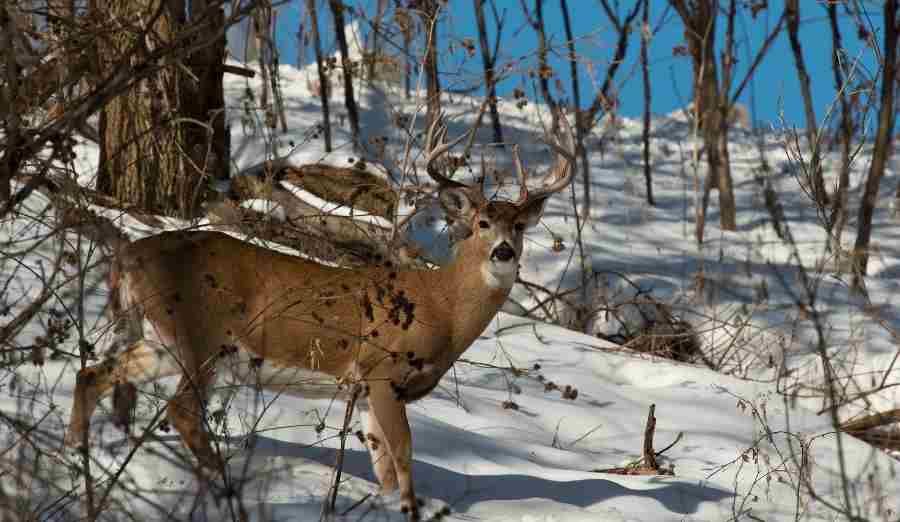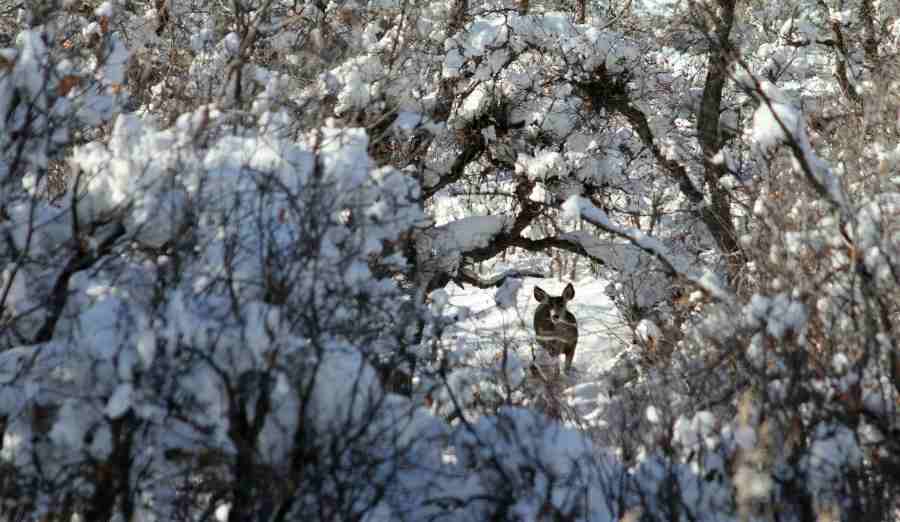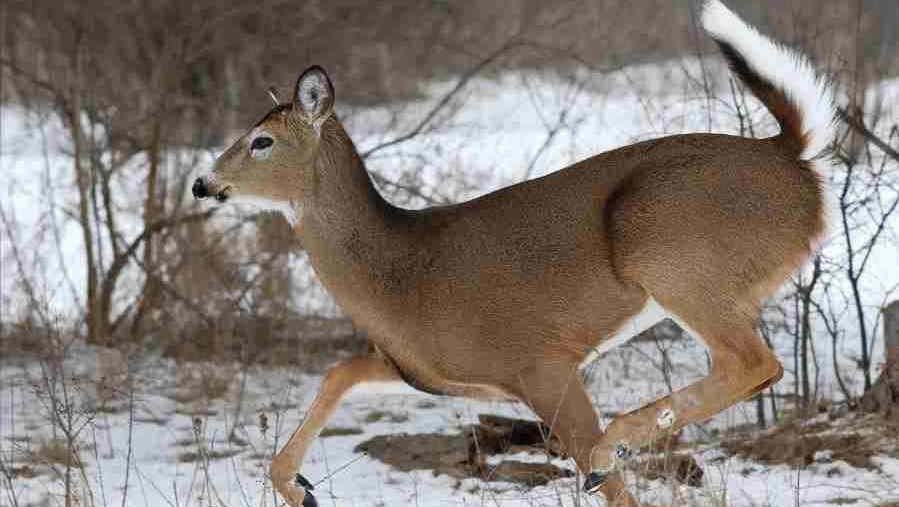As the last days of November come to pass, rutting activity will slowly dwindle. As a result, many hunters will note a reduction in overall deer sightings, as bucks and does both begin settling into their post-rut patterns. While this can be somewhat discouraging to those still harboring an unfilled tag, there is still a wealth of opportunity to be capitalized upon.
Contents (Jump to Topic)
ToggleThe post-rut can offer some of the season’s finest hunting when one adapts their strategy to coincide with prevailing late season patterns.
While hunting the post-rut can present numerous challenges, those who remain diligent in their efforts are often rewarded with a shot opportunity in the weeks to come.
The following are 5 strategies for maximizing your chance at success when hunting the post-rut period.
Find The Food, Find The Deer

During the rut, bucks expend an immense amount of energy seeking and chasing does.
In fact, many mature bucks shed as much as ⅓ of their body weight during the rut, due to accelerated caloric consumption that results from this period of frenzied activity.
read.. Where Do Bucks Go When Bachelor Groups Scatter?
In a bid to sustain themselves in preparation for the cold winter months ahead, bucks flock to high-quality food sources during the post rut period.
During this portion of season, bucks have little on their mind other than feeding and bedding. Crafty hunters can use this knowledge to their advantage, by locating and hunting favored food sources.
These favored food sources differ by area but often center around any site that offers green browse, or grain. If you planted food plots before season, now is the time to be motoring and hunting such locations.
Additionally, any agricultural grain that is still standing, will also prove to be of significant value.
Hunt Watering Holes Within Close Proximity To Bedding
During the post-rut period, bucks tend to conserve as much energy as possible, by moving only when required to do so.
This necessary movement typically centers around traveling to feed, and back again.
This can present difficulty for a hunter when much of this movement is taking place under the cover of darkness.
However, deer also require adequate hydration and will rise from their beds throughout the day in order to visit nearby watering holes.
These locations can make wonderful ambush sites, as they allow a hunter to take advantage of any daytime movement as it occurs.
It is key to focus on watering holes that are closest to known bedding areas, as bedded deer often venture only as far as is necessary to satisfy their thirst.
These locations can include cattle ponds, creeks, or even small lowland areas that collect water during a rain.
Hunt South Facing Slopes

During the dead of winter, temperatures often nosedive, creating a harsh environment for whitetails to contend with.
By nature, deer seek out bedding locations that present them with the greatest amount of heat, in a bid to sustain their body temperatures.
In many cases, this is as simple as selecting bedding sites that receive the highest degree of sunlight.
read.. best warm socks for hunting
Throughout the post-rut, southern facing points receive the greatest amount of direct sunlight and are the earliest locations to rise in temperature of a morning.
Bucks and does both tend to favor south-facing hillsides as prime bedding locations during periods of extremely cold weather.
Armed with this knowledge, hunters can seek out the whereabouts of such sites, and hunt trails leading from these bedding areas to heavily favored feeding areas.
Hunting trails of this nature drastically increases a hunter’s chance of witnessing a significant daytime movement.
Do Not Forget The Secondary Rut
While many hunters feel that the post-rut signals the conclusion of all seeking and chasing, this is not always the case.
In fact, approximately one month after the rut peaks, a secondary rut occurs.
While not as intense as the primary rut, the secondary rut typically offers a wealth of opportunity, which can be seized upon to finally fill any remaining tags.
The secondary rut takes place when does who were not bred during the primary rut, come back into heat.
Additionally, many early-born doe fawns will experience their initial estrous cycle.
As a result, much of the same deer activity that is observed during the primary rut, once again takes place for 1-2 weeks in mid-December.
During this period of time, hunters can again employ any of the same tactics that were utilized during the rut.
Both rattling and calling can be effective secondary rut hunting tactics, as can the use of estrous based scents.
Hunters can also revert back to hunting pinch points and funnels that are often used by bucks as they seek out does who have come into heat.
Keep Pressure To a Minimum
Much like during the earliest days of archery season, bucks tolerate little in the way of intrusion during the post-rut period.
If a buck begins to detect excess pressure, they will most often relocate to any area that they feel to be safe.
This will also cause bucks to become increasingly nocturnal in their movements, thereby presenting major issues for any hunter with an unfilled tag.
In order to keep pressure to a minimum, it is imperative to eliminate your human scent to the most effective degree possible.
The use of scent-free laundry detergent, body wash, and scent eliminator is highly advised. However, the single biggest factor toward concealing your presence is to only hunt in a location for which the prevailing wind direction is favorable.
It is also extremely important to consider your path of travel both to and from your stand.
If you alert deer when entering or exiting a property, they will become wise to your intrusion in record time, making it nearly impossible to find success.
In any event, make sure that your travels do not cross directly through known bedding areas or heavily trafficked food sources.
Making The Most Out Of Hunting The Post-Rut
While hunting the post-rut can be challenging, it can be extremely rewarding as well.
Those armed with the necessary knowledge to put an effective strategy into action, often end their season in success.
However, those that approach post-rut hunting in an unhinged manner, often unknowingly squander their chances of filling a tag.
By employing the above-mentioned tactics, you will be well on your way to unlocking the full potential of the post-rut period, and will likely experience a conclusion to the season that far exceeds your expectations.







Conversation | 2 comments:
Thanks for this was very helpfull. because i always strike out during postrut. but i plan on beening very rewarding this season.
i know its not here yet. but i plan on put in alot of effect in this post rut hunt this year. and plan on doing it with a bow…..